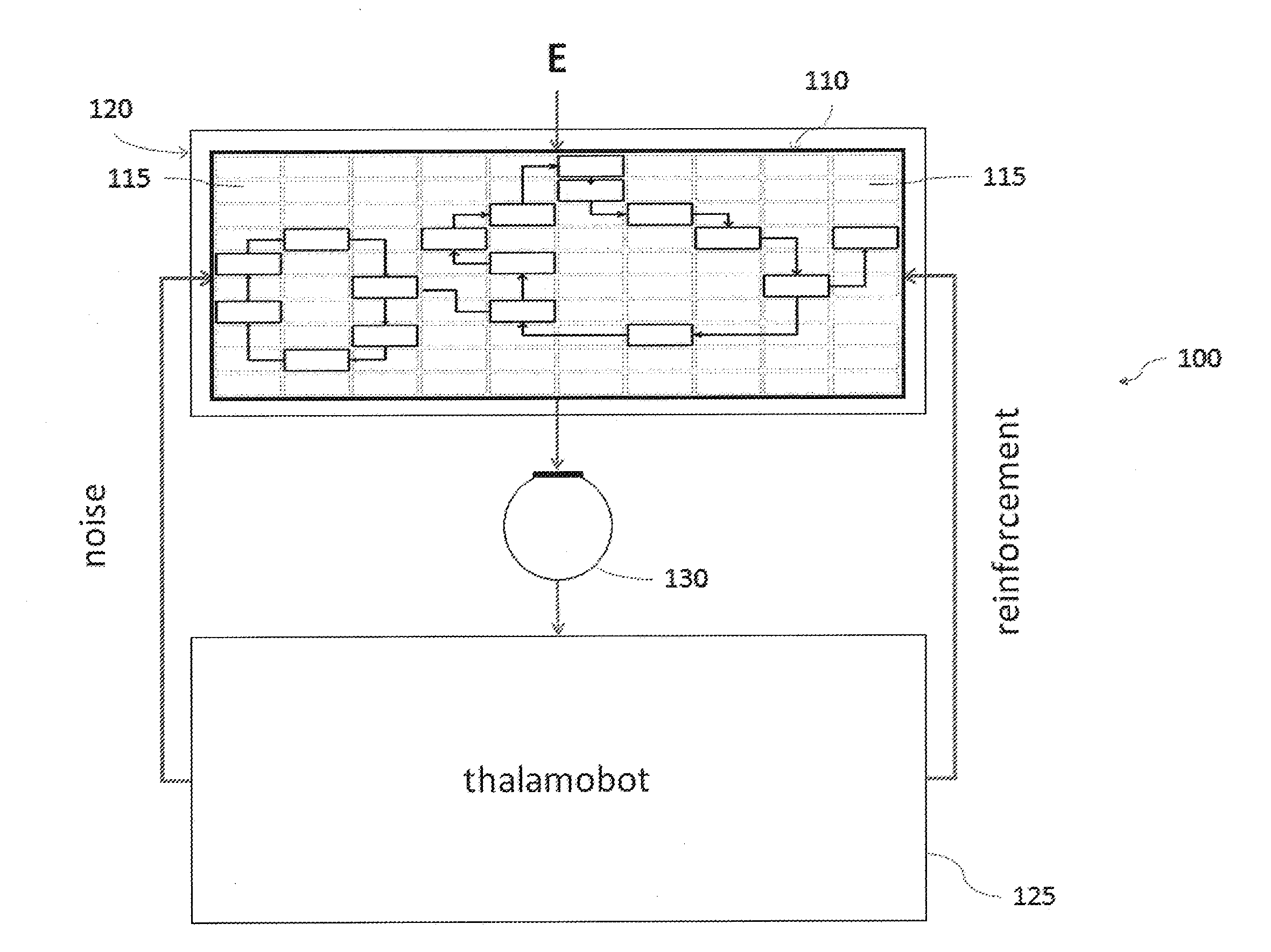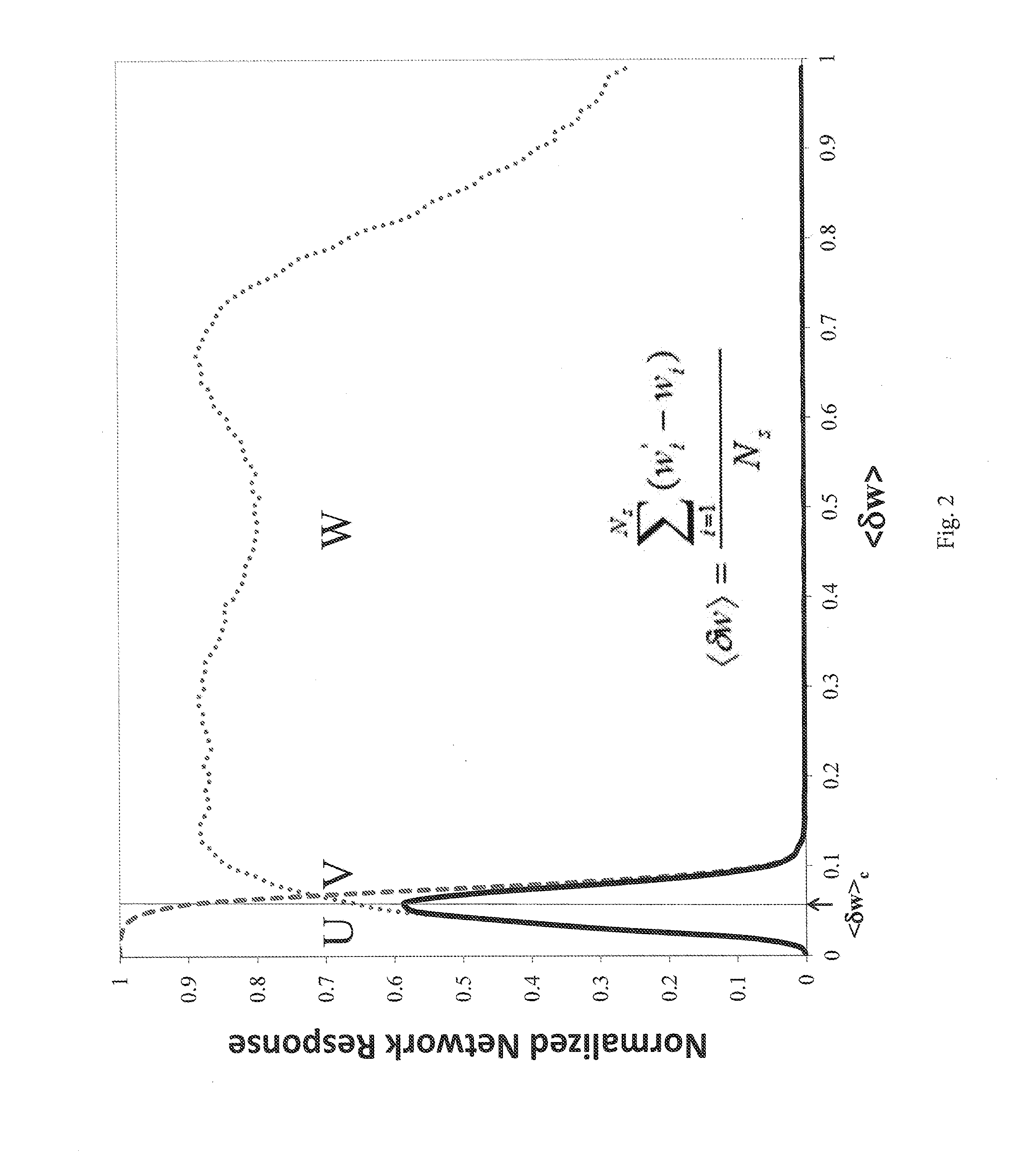Device and method for the autonomous bootstrapping of unified sentience
a technology of unified sentience and bootstrapping, applied in the field of artificial intelligence and machine consciousness, can solve the problems of inability to isolate the formation of associative chains, the burden on memory and processors, and the inability to identify valuable activation patterns within the cortical algorithm,
- Summary
- Abstract
- Description
- Claims
- Application Information
AI Technical Summary
Benefits of technology
Problems solved by technology
Method used
Image
Examples
Embodiment Construction
[0043]In the following detailed description numerous specific details are set forth in order to provide a thorough understanding of the invention. However, it will be understood by those skilled in the art that the present invention may be practiced without these specific details. For example, the invention is not limited in scope to the particular type of industry application depicted in the figures. In other instances, well-known methods, procedures, and components have not been described in detail so as not to obscure the present invention.
[0044]The following terms are defined to provide a framework for the discussion of embodiments of the invention:[0045]Neural Module (115): an individual neural network in the form of an input-output mapping. Herein, adaptive multilayer neural modules have been used for proof-of-principle experiments.[0046]Synapse / Synaptic[0047]Connection Weight: Numerically-based connections between neurons within a neural module or between neural modules thems...
PUM
 Login to View More
Login to View More Abstract
Description
Claims
Application Information
 Login to View More
Login to View More - R&D
- Intellectual Property
- Life Sciences
- Materials
- Tech Scout
- Unparalleled Data Quality
- Higher Quality Content
- 60% Fewer Hallucinations
Browse by: Latest US Patents, China's latest patents, Technical Efficacy Thesaurus, Application Domain, Technology Topic, Popular Technical Reports.
© 2025 PatSnap. All rights reserved.Legal|Privacy policy|Modern Slavery Act Transparency Statement|Sitemap|About US| Contact US: help@patsnap.com



